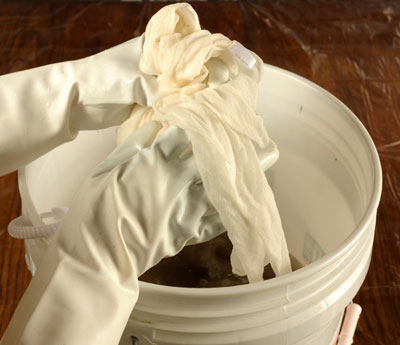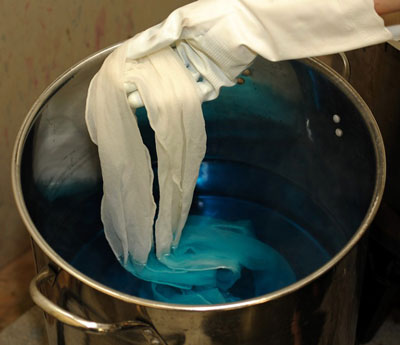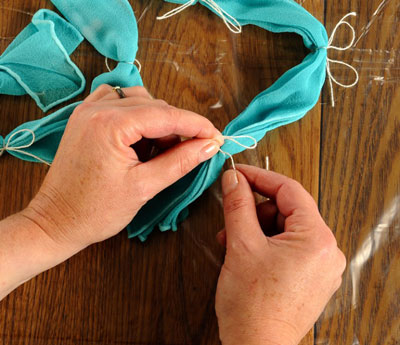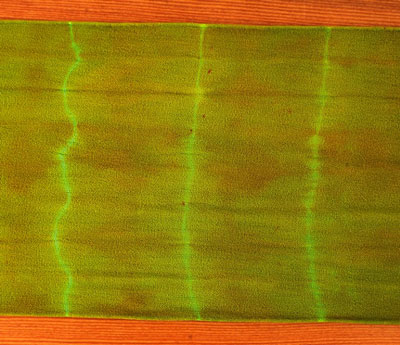This dying method is one of several ways you can use reisist dying to create fanciful silk scarves. After you fold the scarf, you overdye it in a contrasting color. When the dye is set and the scarf is dry, remove the resist and admire the pattern you have created.
Dyeing silk scarves is a fun way to use leftover dyes. It’s also a neat way to experiment with mixing colors and to explore textile surface design techniques. Keep a stash of silk scarf blanks (available from dye supply companies, listed in the appendix) on hand to absorb the color left over in unexhausted dye baths.
Gather these materials:
Four 1 X 60-inch crepe de chine silk scarf blanks
An unexhausted acid dye bath
Leftover acid dyes
White cotton string
Embroidery or small scissors
Iron
Place the blank scarves in a warm presoak with 1⁄2 teaspoon Synthrapol.

Allow them to soak for at least 1 hour.
An unexhausted dye bath with a visible amount of leftover dye will dye the scarves a pale overall color. You may add more dye to the unexhausted bath to deepen the color. Add more dye in small increments (25ml at a time). Check the dye bath, making sure the pH range is between 4 and 6. Add 1 teaspoon citric acid crystals if needed.
Add the scarves to the dye bath and gradually raise the temperature of the bath to 185°F (85°C).

Do not let the temperature go beyond this point or it will ruin the luster of the silk. Allow the scarves to simmer for 30 minutes.
When the dye bath has cooled completely, rinse the scarves in warm water. Then hang them on a rack to dry.
Using the silk setting on an iron, press the scarves to remove all wrinkles.
Make a 1-inch fold lengthwise and press the scarf along this fold.
Turn the scarf over and make a second fold lengthwise. Press this fold to form a pleat.
Continue to fold and press the scarf, forming crisp accordion pleats.
Create the resist pattern by tying cotton strings tightly at 2-inch intervals for the length of the scarf.

Wherever you tie the string, the fabric will resist the second color.
Place the scarf in a zipper-locked baggie with dye and vinegar, as described for the stitch and gather method. Place the baggie in a pot to steam for 45 minutes. When the pot has cooled, rinse the scarf in warm water, then remove the ties and rinse once again.


